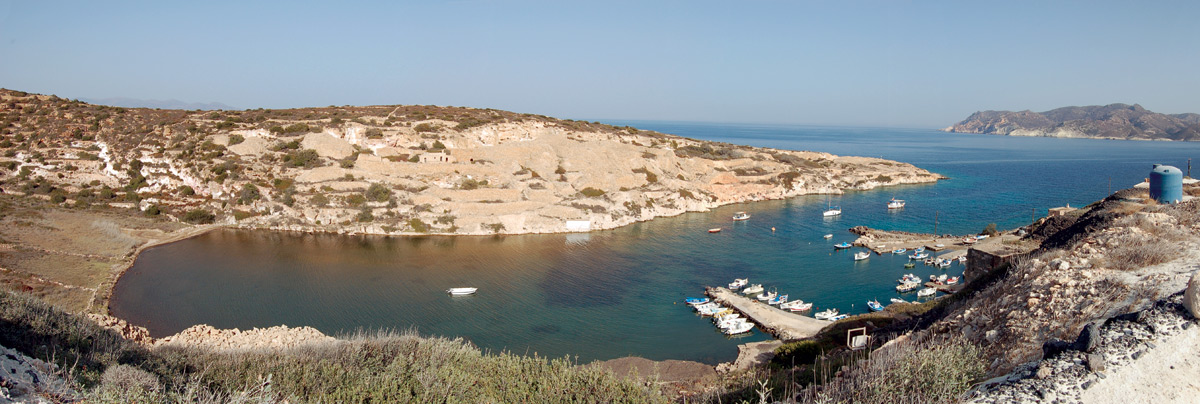
According to mythology, the name of the island derived from its first settler, Kímolos, son of god Apollo (Apollo had many kids!!!). The island was also known in antiquity as “Echinoúsa”, i.e. island of Echidnes (= snakes, in Greek), whereas the Venetians called it “Arzientera” (silver).
In the 5th century BC., its civilization was rather developed at the time. It followed Mílos lead closely, but the regime was organized along the lines of the Athenian democracy, having goddess Athena as a patron saint. The ancient town was built where Elliniká settlement is today but it was sunk and destroyed for unknown reasons (maybe an explosion of the volcano in neighbouring Mílos?). Today, you can still spot in the bay of Elliniká traces of houses and ruins.
When the Peloponnesian War ended (404 BC.), Kímolos came under the Spartan rule and the inhabitants were taxed heavily. Within 10 years, the island was impoverished and was left at the mercy of any conqueror or plunderer that bothered to blunt his blade there.
Throughout antiquity, Kímolos was renowned for its “Kimolian soil”, a sticky clay-type mineral which was used for bleaching clothes and also pharmaceutically, as a salve for skin diseases (today that same mineral is used to make chalk). In most of the historic sources, Kímolos is basically mentioned as a place of mining and trading kimolía (visit the beach of Prasonísi, dominated by the large mine of kimolía behind it, to acquire a feel of what kimolian soil is).
In 1204 AD, Kímolos was occupied by the Franks (Marco Sanudo) for 4 centuries and then, in 1617, was taken by the Ottomans. During the Turkish rule, the island was a refuge of pirates, just like Mílos was. There were no Turks on the island, they would only come once a year to collect the tax, and then leave in a hurry to avoid getting captured by the pirates.
After the Hellenic revolution of Independence, Kímolos was just grazing lands and fishing waters. In the 2nd World War, it was occupied by the Germans quite late, in 1944, only to be freed in a years’ time, on the 8th of May 1945.
Kímolos is a small island, with few permanent inhabitants. In essence, there is only one village on the island, but there are many, many sandy beaches. Visit the old settlements of Mesa Kástro and Exo Kástro (with beautiful architecture), the caves of Vromólimnos, Gerakiá, Kakopotámou but most of all the cave of Consolína, named after the wife of the French Consul who hid there to escape the pirates. The pirates found her and tortured her in order to discover where she hid her jewelry. She ended up marrying the chief pirate!



